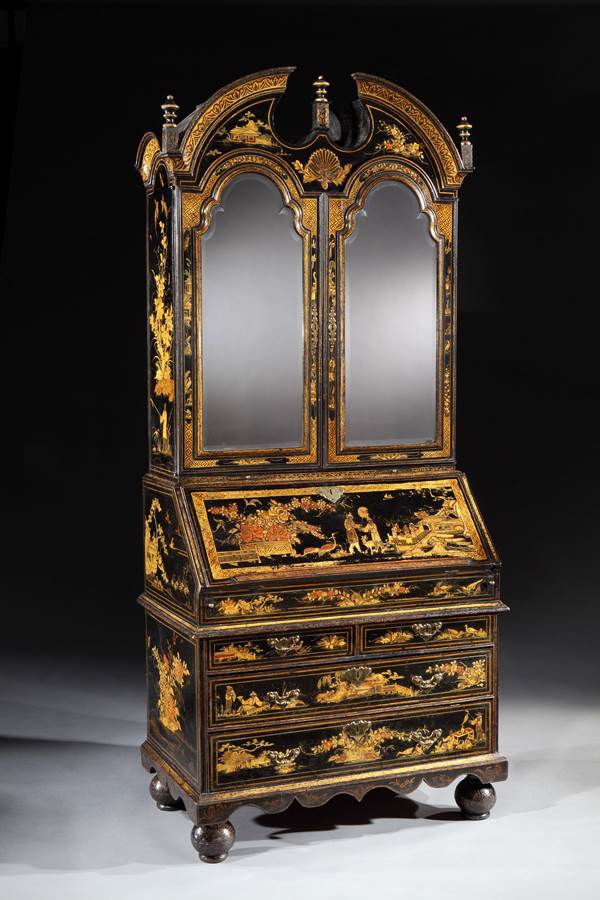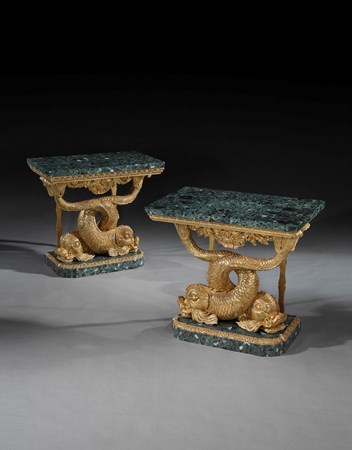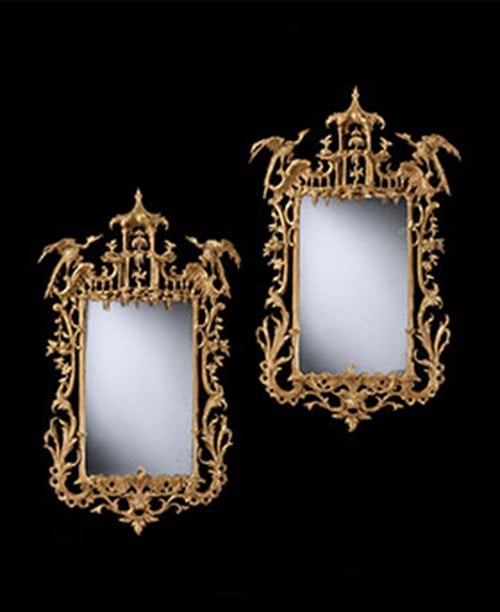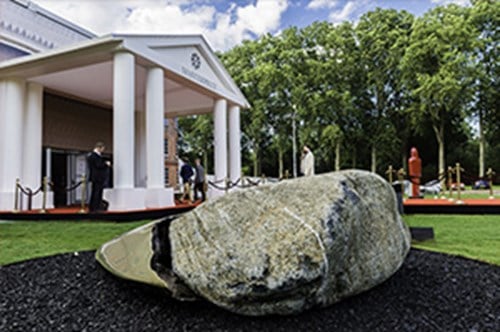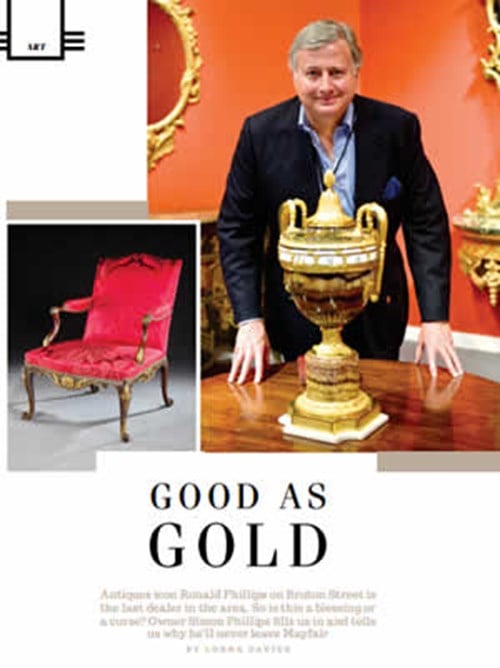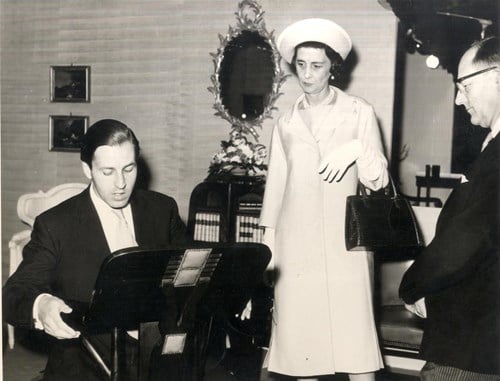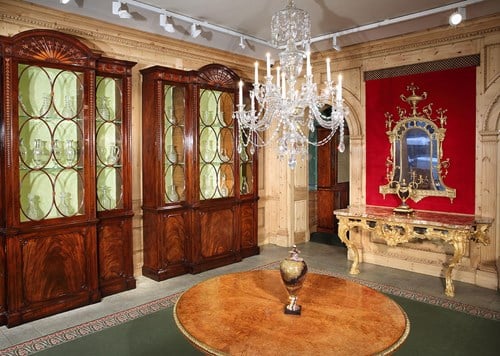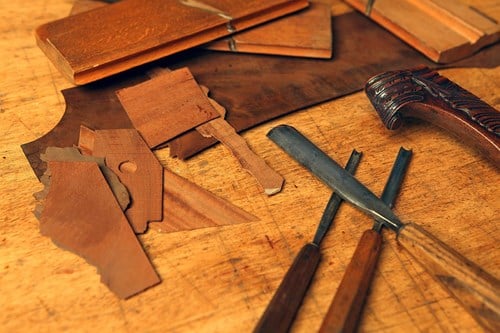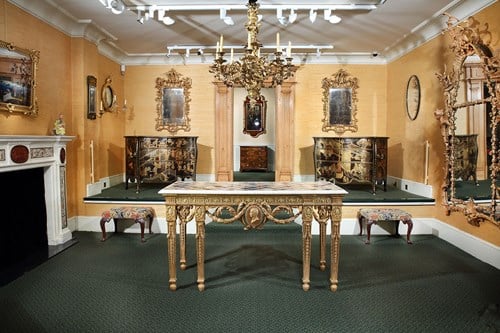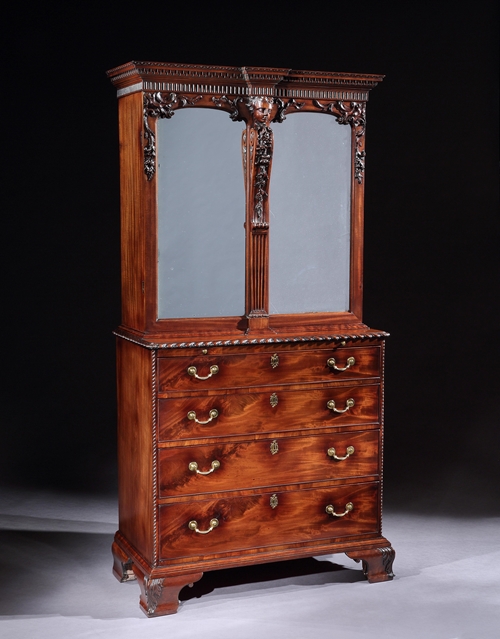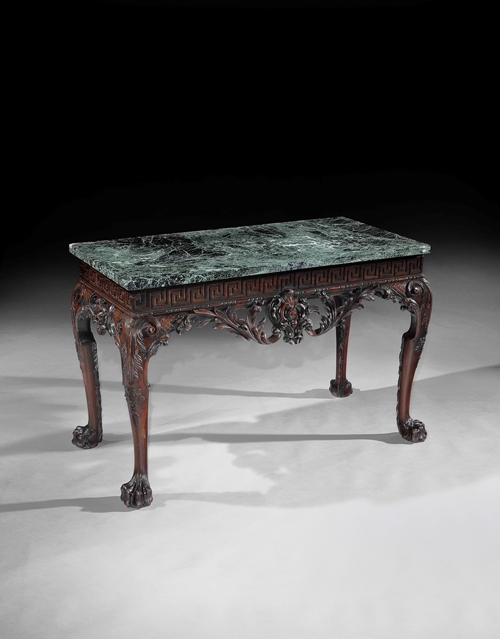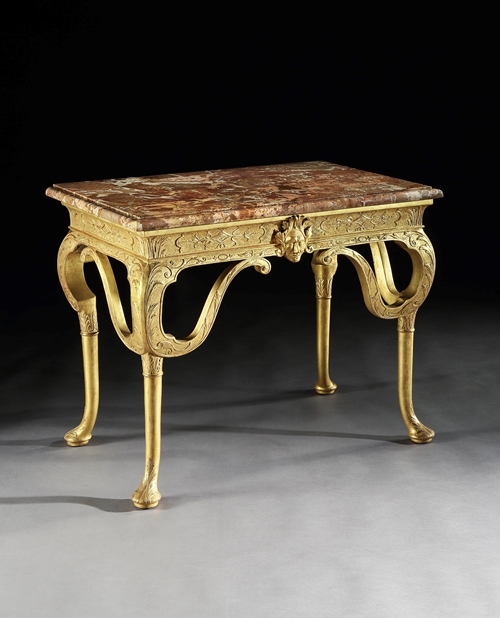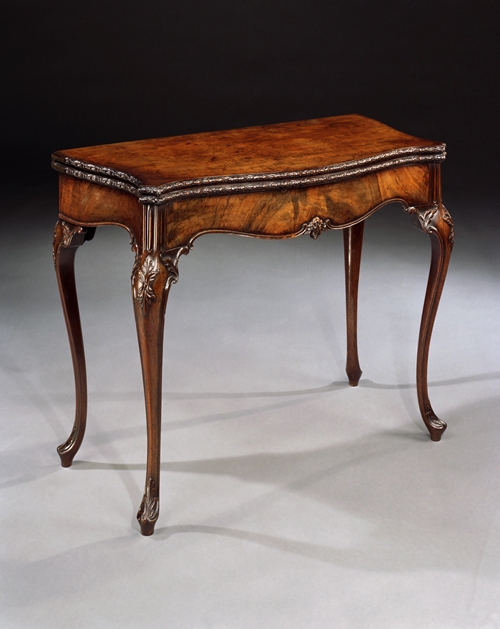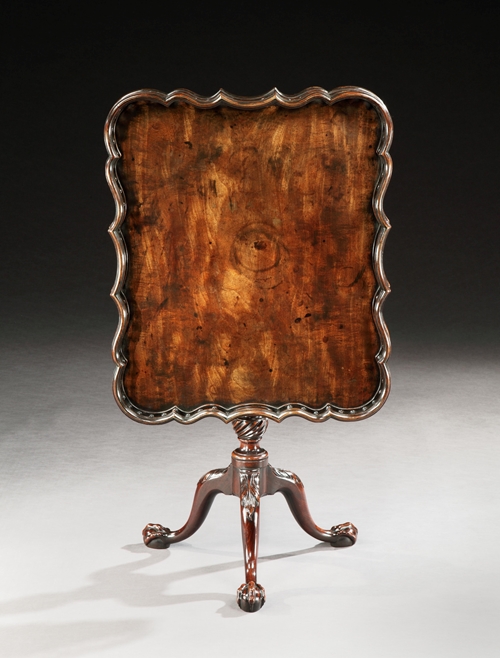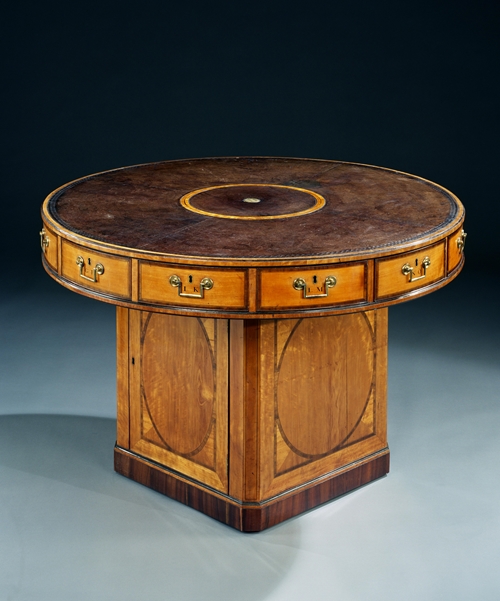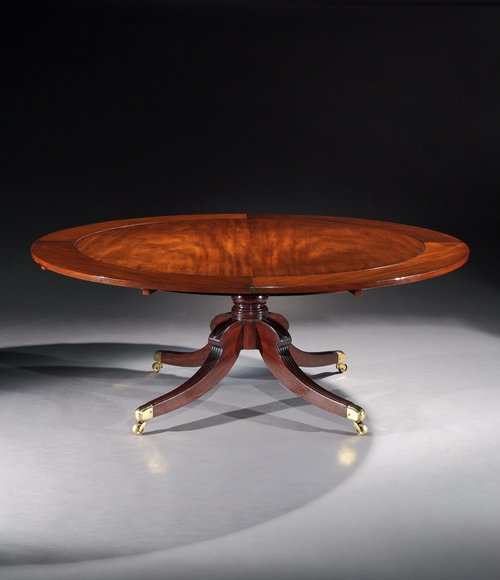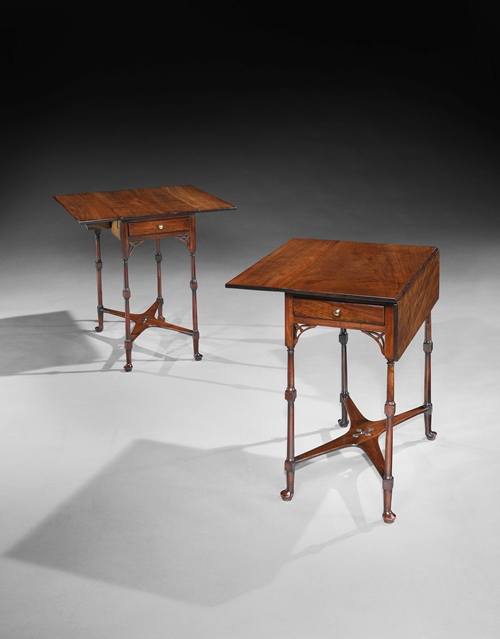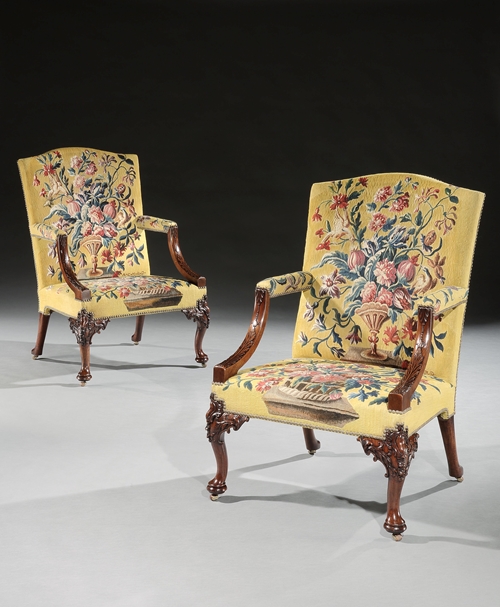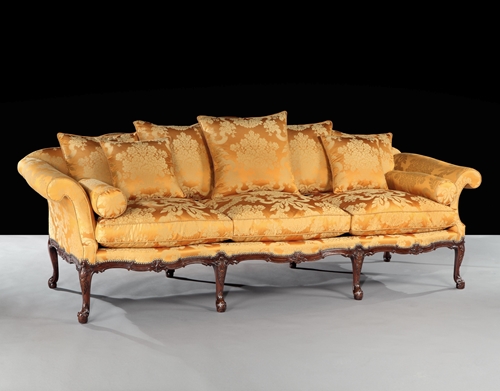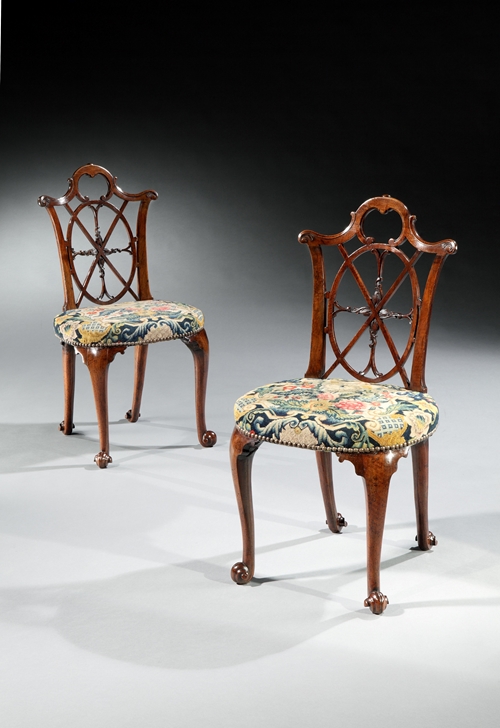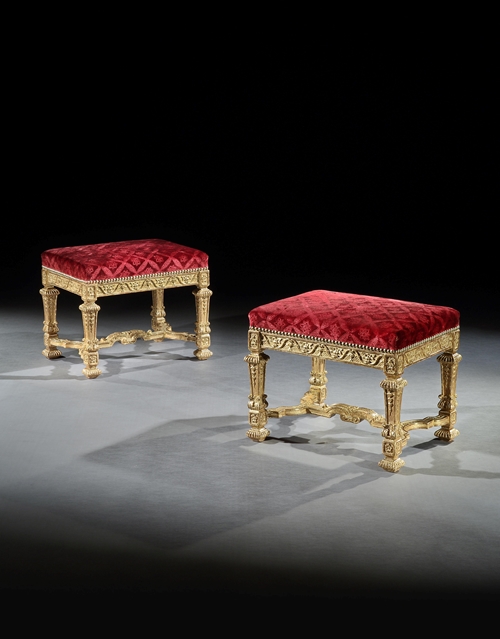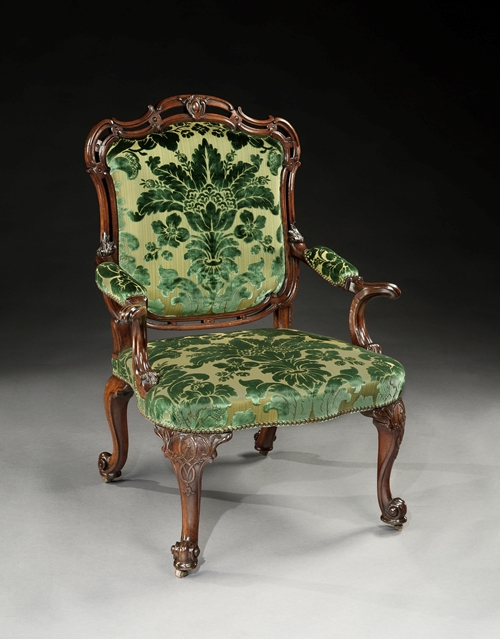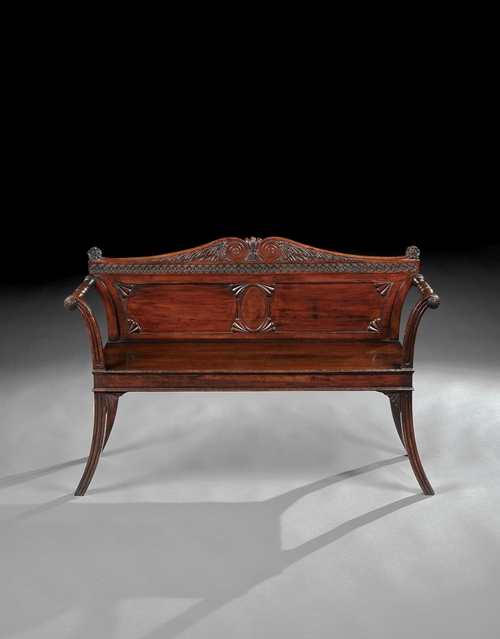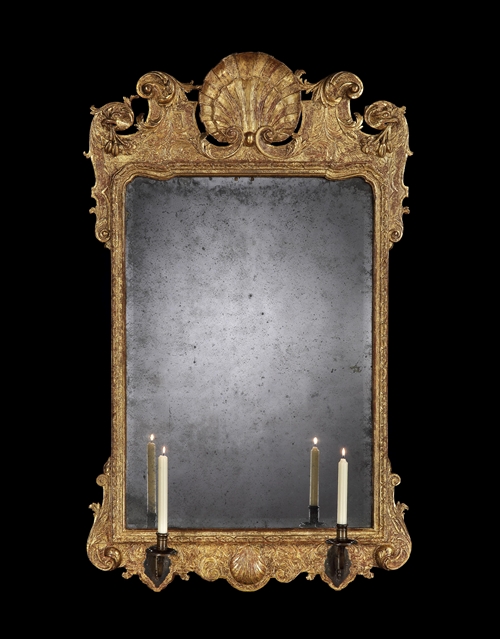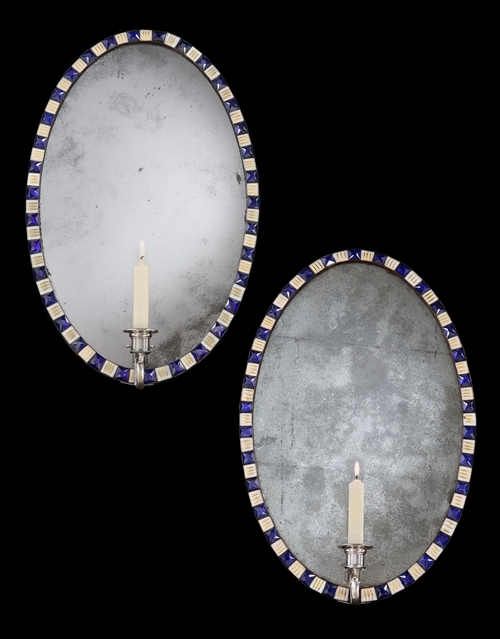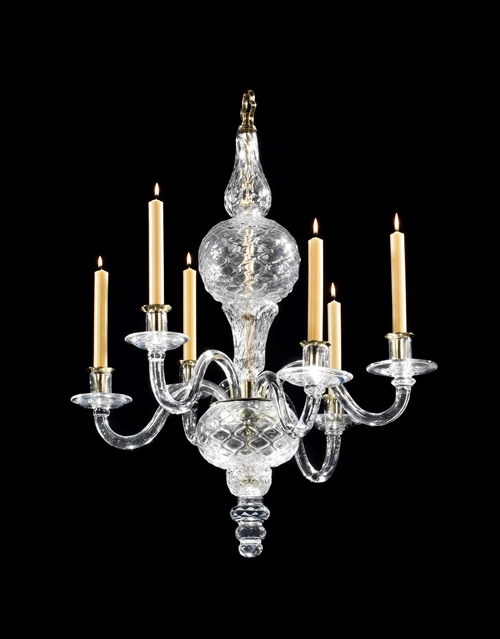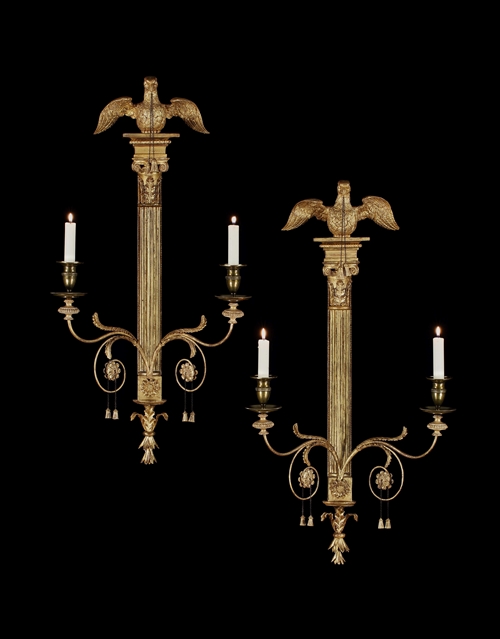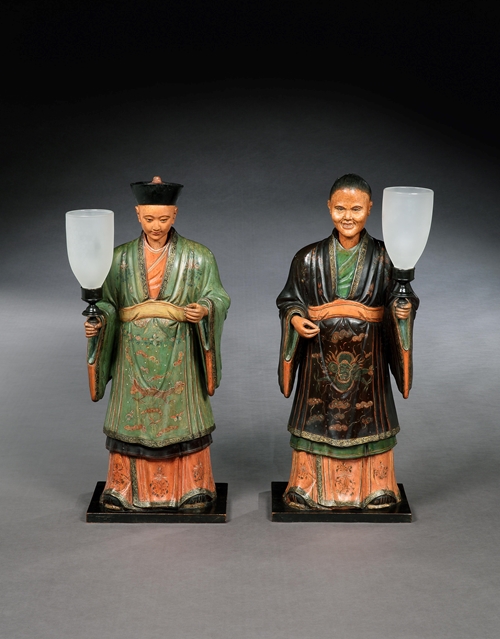An exceptional and highly important early 18th century black japanned bureau cabinet constructed in three sections, decorated in the finest English japanning in raised gold and red hues on a black background, depicting chinoiserie scenes of idyllic islands with exotic buildings, trees, flowers, birds and groups of chinoiserie figures in their daily life. The upper section having an arched open pediment, crested with the original turned finials to the centre and each side, above two arched doors with the original shaped and bevelled mirror plates and pull-out candle slides below, revealing a fitted interior of eleven pigeon-holes, ten drawers, six document slots, two column slides, two arched recesses and a central door with the original shaped and bevelled mirror plate.
The central section having a sloping hinged fall supported on pull-out lopers, with a replaced green silk velvet lined writing surface and fitted out with eight pigeon-holes, four drawers, two column slides, a central door with 18th century replaced mirror plate and a well with sliding lid.
The lower section with moulded edge having two short and two graduated drawers below, retaining the original shaped brass plate handles and escutcheons; on a shaped plinth base terminating in the original bun feet.
Note: This amazing cabinet has survived in remarkably untouched condition. A virtually identical cabinet, undoubtedly from the same workshop, is illustrated in Percy Macquoid’s A History of English Furniture, and a further example, also from the same workshop, was formerly in the Royal Collection and was subsequently exhibited by Edwin Herzog Antiques at the Grosvenor House Antiques Fair in 1975. A red japanned cabinet of virtually identical design, and very probably from the same workshop, is in the collection of the Victoria and Albert Museum, London.
Literature:
Percy Macquoid, A History of English Furniture, vol. II, ‘The Age of Walnut’, 1905, p. 149, fig. 134.
Oliver Brackett, Catalogue of English Furniture and Woodwork, vol. III, ‘Late Stuart to Queen Anne’, 1927, pl. 39. Herbert Cescinsky, English Furniture from Gothic to Sheraton, 1929, p. 242.
R. W. Symonds, Bureau writing cabinets, ‘Antique Collector’, March/April 1944, pp. 45–50.
‘The Grosvenor House Antiques Fair Handbook’, 1975, p. 54.
'Antique Collector’, January 1985, p. 187.
‘The Grosvenor House Art and Antiques Fair Handbook’, 2007, p. 114.
‘Country Life’ 2 December 1993, p. 37.
-
Provenance
Private collection, Italy.
Looking for something similar? YOU MAY ALSO LIKE
YOU HAVE RECENTLY VIEWED ITEMS
- CAN WE HELP YOU?
- +44 (0)20 7493 2341
- [email protected]
